THE STORIES THAT MATTER TO YOU

GRATUIT
• ÜCRETSIZ • GRATIS • • ZA BESPLATNODARMO • • FREE


GRATUIT
• ÜCRETSIZ • GRATIS • • ZA BESPLATNODARMO • • FREE
INCLUDING : the tape letters project bringing old stories from Pakistan • a blether with a bot hazelnut and ricotta cake recipe • the Bangladesh Association Glasgow celebrates Mother Language Day • legacies of colonialism exhibition • the importance of link workers • the super power of Annette St Primary • cryptic crossword • news in brief • what’s on • and more
Featuring articles in: , Čeština, Polski, , Gàidhlig


JENNY MATTHEWS
SEWING CONFLICT: PHOTOGRAPHY, WAR AND EMBROIDERY
UNTIL 12TH MAY AT STREET LEVEL PHOTOWORKS, TRONGATE 103, GLASGOW
RUYA - GOVANHILL WOMEN’S PHOTOGRAPHY GROUP
SAREH ABASI, SYEDA SADAF ANWAR, NAJAT EL BOUHALI DIGOUG AND MORWENNA KEARSLEY
2ND MARCH - 21ST APRIL AT GALLERY 103, TRONGATE, GLASGOW
OSCAR MARZAROLI’S GORBALS A PERMANENT EXHIBITION OF ICONIC IMAGES
GORBALS


Dear Readers,
The beauty of languages is much like communities; they are each distinct in their own way but they gradually overlap and intertwine through shared histories. So in a place like Govanhill and the surrounding area, where languages and community are in abundance, it was only a matter of time before we had a language issue.

In the diversity of topics covered, it’s clear that language can transcend words. It can be seen in the language support we give our neighbours, when we choose to bake our grandpa’s recipe – the way he liked it – and the time we give to better our communities.
To me, this felt evident while writing ‘Voices Across Time: The Tape Letters Project Preserving British-Pakistani Heritage’ and exploring how my community used their language to stay connected with loved ones. This was a moving journey and a reminder of how critical it is to preserve our histories – I believe that in some ways, every article in this issue is doing just that.
Although we are celebrating wrapping up another issue, we’re also bidding farewell to our brilliant editorial assistant, Jack who has been with the magazine for nearly two and a half years. While we give him a bittersweet send-off, fresh copies will be hitting your local community spaces. We hope you enjoy reading this issue as much as we enjoyed putting it together.
Yours sincerely,
Samar Jamal Journalist
A special thanks to our advertisers: Garolla, Glasgow Zine Library, Home Energy Scotland, Magikats, Parav Glasgow, Street Level Photoworks and Studio 70. Want to advertise in our next issue? Email advertising@greatergovanhill.com
We’re also grateful to every one of our members who help us to keep going, even when times are tight. If you enjoy the magazine and can support us with a few quid a month, visit: community.greatergovanhill.com/join

Editor-in-Chief Rhiannon J Davies
Creative Director Laura Hurst paperarcade.co.uk
Editorial Assistant Jack Howse
Staff Journalists Devon McCole and Samar Jamal
Picture Editor Iain McLellan
Cover Image Tabassum (Tab) Niammat by Iain McLellan
Words by
Altaf Hossain Russell, Amy di Rollo, Ania Noakes, Beti Scott, Bruce Morton, Catherine Weir, Devon McCole, Dæmon Sorcha Clelland, Gabby Cluness, Huda Alarishi, Jack Howse, Lena Popikova, Lottie Hanwell, Mary, Marzanna Antoniak, Rahela Cirpaci, Rhiannon J Davies, Saif Khan, Samar Jamal, Scottish Ethnic Minority Deaf Club, Stefan Krajcik, The Anymen, Victoria Reina Gil and Zara Grew
Photos by
Alexander Hoyles, Bangladesh Association Glasgow, Eoin Carey, Iain McLellan, Michael Paley, Miriam Ali, Rhiannon J Davies and Simon Murphy
Illustrations by Catherine Weir, Hannah Moshtael, Indrė Šimkutė and Sasha Delmage
Translations by
Altaf Hossain Russell, Alicja Tokarska, Catherine Weir, Romano Lav and Saif Khan
Printed by Gladstone Media Ltd

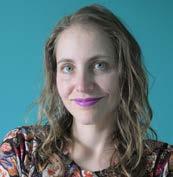
Alicja Tokarska is a translator and subtitler specialising in inclusive language and sustainability. She enjoys running, cycling, sewing, and cuddling her two cats.
Check out her translation of our article on healthcare link workers on page 28

Miriam Ali is a photographer and visual artist based in Glasgow. Her work focuses on themes of identity, religion and home, often using elements of poetry and textiles.
Find her photos of the City of Empire exhibition which she also helped to curate on page 24

Bruce Morton is a recovering comedian who, following the collapse of his Southside independence movement “Greater Shawlands Republic”, retreated to his Govanhill dacha where he has been writing his memoirs.
Catch him blethering with a bot on page 31


News in Brief
All the latest from around the neighbourhood
Roma News and Views
Should the Romanes language be kept a secret? Or shared with others?
09
Behind the Portrait
Like My Grandfather Used to Make Georgio’s hazelnut and ricotta cake recipe 12
My Life Before Govanhill Dana on growing up in Russia and life in the Southside

Voices Across Time: The Tape Letters Project How old cassettes document British-Pakistani heritage and migration


14
The Multilingual Households of Govanhill
The benefits and challenges of growing up around different languages
18
The Languages of Plants
Plants that demonstrate the webs of communication between plants and humans
The School with a Super Power How Annette Street Primary celebrates pupils’ cultural heritage and diversity
Celebrating Mother Language Day: Our Gift to Glasgow
The Bangladesh Association Glasgow on the Bhasha language festival
“I see your history”: City of Empire Exhibition Delving into a new communityled exhibition on colonialism at Kelvingrove Art Gallery
Issue 13 March/April 2024

26
Connecting Through Community On community-based language learning
28
How Govanhill’s Link Workers Remove Barriers to Healthcare
We hear more about their vital role in the community
31
A Blether With a Bot Comedian Bruce Morton chats with sharp-tongued, weegie chatbot (GlasgowChatGPT)
32
What’s On
All the latest events and a round-up of language classes near you
Crossword
The Anymen return with another cryptic crossword
Poem Sad sad sad, by Marzanna Antoniak
Cartoon Roosters of the world, by Catherine Weir
Like the sound of all this?
Want to help keep us going? Scan this code to support the magazine by becoming a member!

By Marzanna Antoniak
In English, when someone says “when pigs fly” we know it’s a way of saying that something will never happen. Different languages use their own metaphors to express the same meaning. Draw lines to match expressions with the languages they are written in.

one afternoon in your next reincarnation als de koeien op het ijs dansen when the cows are dancing on ice
when the clogs blossom quand les poules auront des dents when hens have teeth cuando la rana eche pelos when a frog grows hair
kогда рак на горе свистнет when a crayfish whistles on top of a mountain quando gli asini voleranno when donkeys fly pas gajah bertelur when the elephant lays an egg majd ha piros hó esik when red snow falls
for
Currently, Glasgow has some of the most expensive bus fares of any city in the UK with a single fare costing a whopping £2.85 (compared to £2 in Edinburgh for example). Get Glasgow Moving, the organisers of the Better Buses campaign, have shared a petition they will soon send to SPT in the hopes of improving transport fares and services in Glasgow. They’re calling on the Strathclyde Partnership for Transport (SPT) to ensure that the new Strathclyde Regional Bus Strategy sets out clear plans to use powers for ‘franchising’ in order to plan bus routes to serve communities’ needs and to set up a new public operator for Strathclyde. Local organisations including Women on Wheels and Amina, have added their voices to the call for better buses in Glasgow as pressure against the SPT mounts.
Last month, Glasgow City Council announced that they would be allocating nearly half a million pounds to communityled food projects delivered by third sector organisations as part of the Glasgow Food System Development Fund. The Hidden Gardens in Pollokshields will transform the under-utilised wasteland section of their space, which is not currently accessible to the public, into a growing space which local residents can come along to. The Nan McKay Community Hall near Shields Road and Urban Roots in Toryglen also received funding from the initiative and will also use the money to expand their growing space and work with the local community on food security.
Your views sought on GCC’s updated Air
The Council has set out new plans to reduce levels of air pollution across the city in their latest draft of the document. They are seeking feedback through public consultation to help them determine the best course of action to take over the next five years when it comes to reducing emissions and improving overall air quality in the city. The public’s views on the draft plan are currently being gathered through an online survey, which is open until 20 March. The survey can be found at bit.ly/govanhillairquality

By Iain McLellan

Get involved with a spring clean of Govanhill
Greater Govanhill have been approached by local residents hoping to organise a ‘spring clean’ litter pick for the neighbourhood in April. Details and dates are yet to be confirmed, but it would be great to get as many residents, businesses and community groups involved as possible. If you are interested in being part of it, please email newsroom@greatergovanhill.com.
The South City Way cycle route was finally completed last year and stretches from Queen’s Park to Merchant City, connecting cyclists from the Southside to the City Centre. Now, the council have announced they are expanding the cycle lane from the top of Victoria Road down to the Battlefield Rest as part of their Connecting Battlefield project. Work is due to begin in the spring and then afterwards phase two of the project will see improvements made to the junction at Battlefield Rest.
Greater Govanhill launches first podcast with FONDS
Last month saw the unveiling of the FONDS project which tells the stories of the objects people hold dear – from a sticking plaster to a glass fish, a box of spells to a perfume bottle. The exhibition of the photos by Morwenna Kearsley will be on upstairs at Tramway until the end of March. The exhibition is accompanied by a podcast produced by Flora Zajicek where each of the object’s keepers tells the story of their object, and a film by Sam Gonçalves. The podcast has been well received with reviews in places like The White Pube and the Radio Times. Available wherever you get your podcasts.
of parking and school meals to rise
Glasgow City Council released this year’s budget, in which they laid out their intention to increase the prices of some public services and facilities, while they reduce their spending as they try to cover an almost £108 million shortfall over three years
• School meals are to rise to £2.10, a 10p increase from last year, to try to raise thousands of pounds over the next couple of years.
• Parking charges will increase in the hopes of raising an extra £7 million. Increased charges will apply to multi-storey car parks, park and display parking, and residents’ visitor parking, and parking charges will be extended to 10pm.
• Glasgow Life facilities are expected to try and raise millions of pounds more in income to make up for the lack of funding as a result of widespread budget cuts.
Join our photography group
Govanhill seems to have a proliferation of talented photographers – many of whom have had their work featured in the magazine. In order to build new connections, share skills and create a network, we’re launching a new photographers meet-up group. Whether you’re a seasoned snapper or an enthusiastic newbie, all welcome. To get involved, fill in this short form at: bit.ly/govanhillphotography
Rick Stein’s new show sees him sampling tastes of Govanhill
Last summer, locals took to social media talking about a surprise celebrity sighting in Govanhill. TV chef Rick Stein was spotted sampling dishes from local spots like Gomo Kimchi and Big Counter for the Glasgow episode in his latest show Food Stories. The episode aired recently on the BBC and is available on the BBC iPlayer for those who missed it.
Local organisation Music Broth have joined We Make Music’s instrument libraries project as they expand the initiative into Glasgow. Library has their own music library for children and young people up to the age of 25. Over 30 instruments will be stocked thanks to Music Broth, who will also be hosting some musical workshops there. Budding young musicians can borrow instruments with their library card as they would a book.
period products at People’s Pantry for non-members
The month of February marked period dignity month here in Scotland began after the government rolled out the free period provisions scheme across the country; a scheme which intends to address period stigma and increase accessibility to necessary period products for those in need. In Govanhill, The People’s Pantry recently announced that the period products they stock are now available to non-members, to make sure as many people in Govanhill have access.
Police issue fines for poor parking in Govanhill
In response to complaints from local residents, police and Glasgow City Council Enforcement Officers have been issuing fixed penalty notices in Govanhill for poor parking. In one day, 51 drivers were issued warning notices for double parking – a common problem in the area – while seven were handed fines for other offences.
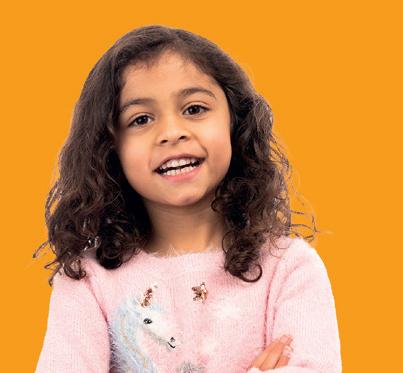
Community Newsroom launches Open House


Greater Govanhill and The Ferret have launched a new series of events in our shared space. Exploring a different topic each month, we want to know what stories are missing from the public conversation and how the media can better report on different issues. The Open House event series began in February, with a look into the housing emergency. The Open House is a monthly event with the next instalments happening on Friday 29 March and Friday 26 April. For more information, visit greatergovanhill.com/newsroom.

















By Rahela Cirpaci
Govanhill is one of the most diverse and multilingual places you’ll find, and Romanes is just one language you’ll hear. Romanes is the language spoken by Roma people, and until very recently has not been written down, only spoken over hundreds of years, passed on from generation to generation.
I teach Romanes, and have just finished a block of online beginners classes. I have students from all over the world, from both Roma and non-Roma backgrounds. I was interested to find out more about my students, and reasons for joining the class. I managed to get a chat with one of my students, 76 year old Lon Silagi from New Mexico, USA.
Lon’s grandparents were from Bihor, Romania. His grandfather emigrated in 1913 to Canada, and that’s where he met Lon’s grandmother.
Later on they had 11 children and Lon’s father was the only boy in the family so he was treated like a prince. He had to learn to take care of his father’s businesses; his father was a carpenter and owned several.
Lon’s family is what we call ‘Boyas Romani’, a tribe that made wooden spoons and bowls.
I asked Lon what he thought about nonRoma people learning our language as some Roma people feel that our language should be kept a secret. Lon was very open to non-Roma people learning Romanes. He felt the language is “kind of a secret and is dying, it’s fading” and it should be shared to be kept alive.
Romské zprávy a názory: Jazyk je vzácný dar – je to sdílení nebo utajení?
Govanhill je jedním z nejrozmanitějších a vícejazyčných míst, které najdete, a Romanes je jen jedním z nich. Romština je jazyk, kterým mluví Romové, a až donedávna se nezapisoval, pouze se mluvil – po stovky let se předával z generace na generaci.
Učím romštinu a právě jsem dokončila blok online kurzů pro začátečníky. Mám studenty z celého světa, z romského i neromského prostředí. Měl jsem zájem dozvědět se více o svých studentech a důvodech, proč jsem se připojil do třídy. Podařilo se mi popovídat si s jedním z mých studentů, 76letým Lonem Silagi z Nového Mexika v USA.
Lonovi prarodiče pocházeli z Bihoru v Rumunsku. Jeho dědeček emigroval v roce 1913 do Kanady a tam potkal Lonovu babičku.
Později měli 11 dětí a Lonův otec byl jediným chlapcem v rodině, takže se s ním zacházelo jako s princem, ale musel se naučit starat se o otcovy obchody; jeho otec byl tesař a vlastnil několik podniků.

Lon’s wife Lindsey has Scottish heritage and she has similar opinions on sharing languages. Once, when she was at a conference in Nova Scotia, she saw a woman singing in a Gaelic language dialect that is no longer spoken.
It was very meaningful to Lindsey and opened her up to how easily we can lose languages. A recent study found that Gaelic is at risk of becoming extinct by 2030.
Should we keep our languages a secret and speak only within our communities? Or should we keep our language alive by teaching more people and sharing our languages with other communities?
In my opinion I think it’s very important that we share our language not only with other communities but with the whole world. I want my language to be passed on and not forgotten, I would be devastated to find out that in 100 years my language had died out. The Romanes language is such a beautiful and rich language and with many different dialects. I want people to learn more about its beauty and be able to speak with their brothers, sisters and neighbours surrounding them in their communities.
Lonova rodina je to, čemu říkáme “Boyas Romani”,kmen, který vyráběl dřevěné lžíce a misky.
Zeptala jsem se Lona, co si myslí o neromských lidech, kteří se učí náš jazyk, protože někteří Romové se domnívají, že náš jazyk by měl zůstat v tajnosti. Lon byl velmi otevřený neromským lidem, kteří se učili romštinu. Cítil, že jazyk je “jakýmsi tajemstvím a umírá, vytrácí se” a měl by být sdílen, aby zůstal naživu. Lonova manželka Lindsley pochází ze Skotska a má podobné názory na to, zda sdílet jazyky. Jednou, když byla na konferenci v Novém Skotsku, viděla ženu zpívat v gaelském jazykovém dialektu, kterým se už nemluví. Odjela do Skotska, aby se setkala s lidmi, mnohem staršími lidmi, kteří se toho ještě drželi.
Pro Lindsley to bylo velmi smysluplné a otevřelo jí to, jak snadno můžeme ztratit jazyky. Nedávná studie zjistila, že gaelštině hrozí do roku 2030 vyhynutí.
Měli bychom své jazyky držet v tajnosti a mluvit pouze v rámci našich komunit? Nebo bychom měli udržovat svůj jazyk při životě tím, že budeme učit více lidí a sdílet své jazyky s jinými komunitami?
Podle mého názoru je velmi důležité, abychom svůj jazyk sdíleli nejen s ostatními komunitami, ale s celým světem. Chci, aby se můj jazyk předával dál a nebyl zapomenut, byl bych zničený, kdybych zjistil, že za řekněme 100 let můj jazyk vymře. Romský jazyk je tak krásný a bohatý jazyk as mnoha různými dialekty, chci, aby se lidé dozvěděli více o jeho kráse a mohli mluvit se svými bratry, sestrami a sousedy, kteří je obklopují v jejich komunitách.
By Amy di Rollo Ingredients
• 250g shelled hazelnuts
• 250g ricotta cheese
• 225g unsalted butter, softened and cubed
• 250g caster sugar
• 8 eggs, separated
• Finely grated zest of 5 lemons
• 65g plain flour
• 150g dark chocolate, grated

As baked by our editorial assistant, Jack Howse
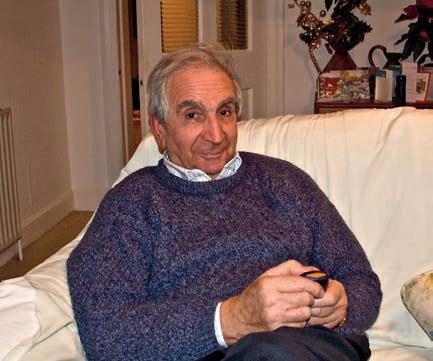
My grandpa, George (self-renamed Georgio), was a keen baker and passionate ScottishItalian so my introduction to baking from a young age was always very ‘Italianified’. This meant that his speciality was adding ricotta to simple cakes that definitely didn’t need any. He always challenged my career path as a pastry chef, he wasn’t a fan of the fuss that pastry chefs added to basic baking. He had a photographic memory so he unfortunately never saw the need to write any of his recipes down and his cakes were laid to rest with him.
This cake transports me back to being in my Grandpa’s kitchen, I can almost hear the crackle of a badly connected Italian radio station. I’ve adapted the recipe from one I baked at a restaurant which used some extra fancy fine dining-y mousses with microherbs thrown on top. I laugh to myself thinking about how Georgio would have called it an abomination. “Why have you wasted your life being trained in the art of ruining simple ITALIAN cakes?!” So, for you Georgio, here is a simple ITALIAN cake recipe, without the fuss or the fanciness – and with plenty of unnecessary ricotta.
You will need either a stand mixer or a handheld electric whisk mixer for this recipe.
1. Preheat your oven to 180 degrees and line a medium cake tin with greaseproof paper. Roast the shelled hazelnuts for around 10 minutes.
2. Peel off the skins of the nuts by gently rubbing them with a tea towel. Blitz them in a food processor until they resemble ground almonds. Be careful not to over-blitz.
3. Beat together your sugar and butter until light and fluffy. You may need to scrape the bowl and continue to beat.
4. Add the egg yolks one by one, being sure to properly combine in between additions.
5. In a separate bowl whisk the ricotta with a fork.
6. Add the lemon zest and blitzed hazelnuts to the ricotta and combine.
7. Combine the ricotta mixture with the yolk and butter mixture, folding gently.
8. Sieve the flour into the mixture and fold again. Transfer the mixture into a large bowl and set aside.
9. Clean and thoroughly dry your mixer. Add the egg whites and beat them until soft peaks form.
10. Carefully fold the egg whites into the ricotta mixture in two additions being sure not to over mix.
11. Pour the batter into your prepared cake tin and bake for around 35 minutes. A knife should come out clean when piercing the cake.
12. Leave to cool for 10 minutes, remove from tin and cover with grated chocolate.

Shaun Murawski

Shaun Murawski is a poet and photographer who has lived in Govanhill for the past ten years.
This photo forms part of Simon Murphy’s Govanhill series. Follow @smurph77 for more.
I grew up next to Wine Alley in Govan, or what used to be that. I never really came to Govanhill as a kid but I had a couple of friends from around here.
I didn’t really have a set idea of what I wanted to do. My mum kinda made me apply for college by saying I either needed to go get a job or study something else after I’d decided to turn down a place I’d been offered at university doing a science course. And then my passion developed from there. It feels strange that I kinda fell into this thing that now I think was made for me.
After college, I was selected for a commission for the Scottish Parliament. I was quite lucky and thankful to have got this because at the time I was gutted that I had been rejected for art school after college. The commission was to take a formal portrait of the Queen.
You’d think it would be strange photographing the Queen as someone who’s really left wing and anti-monarchist, but it wasn’t. I was so young when I did it and in some ways that made it easier with my political leanings, because I had no idea what I was doing. However I was allowed to do it the way I wanted which was so important.
It was made out to be quite a big deal being the youngest person to photograph her. It was in all the papers. But they seemed less interested in my age and more so that I had lots of piercings and looked a bit like a mosher.
My mum died quite unexpectedly during Covid. It was at this time that I started to write again for the first time since school. I think mostly because I couldn’t partake in this communal act of grieving due to the lockdown, and because I couldn’t go outside to take photos which is my usual way of communicating and interacting with the environment. I made these zines with my photos and my words and I got lots of messages from people saying how much the poetry resonated with them.
It’s only very recently I’ve been able to say I’m a poet without getting serious working class guilt about it. I guess it’s an interesting one and is probably related to the fact that if you come from a background like mine, being an artist is never presented to you as a feasible career – not because it’s looked down upon, but more out of practicality. This, and a hundred other reasons I guess. Sometimes I can feel guilty that I have experienced some sort of class mobility when I know people working just as hard as me who aren’t in a great situation. I don’t know how useful guilt is as an emotion though.
This picture of me was taken maybe a year ago but Simon first took a portrait of me seven years ago. It was just when he was starting out on his Govanhill project and was shooting portraits of people he already knew. He took a picture of me lying on my living room floor. My dad has got a print of it somewhere but I’ll burn it when he dies. Not because it’s not a wonderful photo but just…
I love Simon’s work and was honoured to be a part of his recent exhibition. I was happy to just be one of the small portraits though and not one of the framed ones. I really think his work is a special record of a period of time for the area. With Govanhill being what it’s like and with all the people in it, it’s going to change so many times beyond now.
Interview by Marzanna Antoniak DANA CZEREPKOVA
Where do you come from?
I come from Moscow, Russia, a metropolitan city with a population of 12 million. Similar to Glasgow, Moscow is inspiring and challenging at the same time. There, I enjoyed the diversity of the art and music scene, beautiful architecture and vast parks. There were also some things I found difficult there, like endless traffic jams and conflict arising from ethno-racial division.
What about your cultural heritage and the ways in which you connect with your roots?
I was born in Russia and lived there till I was 16. I love Russian folklore and cuisine. I was lucky to have spent long weekends with my grandma collecting mushrooms in the forest outside her dacha (summerhouse) and making hearty soups with them afterwards when I was young. She taught me how to identify edible mushrooms, so I go foraging here in Scotland. I always send pictures of my findings to my grandma to keep her entertained. I also enjoy collecting sea buckthorn berries in late autumn and making tea out of them. It reminds me of cosy evenings with my family. Here, I am part of the Govanhill Voices choir where we occasionally sing Russian and Eastern European folklore inspired songs. There is so much energy in them.
What are some of the things you like doing here?
I work in an architectural practice in the Southside. I enjoy transforming underused buildings and creating spaces that bring people together and are sensitive to the surrounding context. Until recently, I coordinated Govanhill Community Markets with G42 Pop-Ups, Govanhill Baths and GAMIS: mini-street festivals bringing together communities of Govanhill over shared meals, music, workshops, games and film screenings. We took a break this year due to the team’s life commitments, but are looking forward to new adventures in the coming year. Besides that, I’m a board member of Kin Kitchen, enjoy exploring the Highlands, renovating my flat, and having dinners with friends.

What made you come to Scotland?
I came to Scotland 10 years ago and first settled in Edinburgh. I had been looking for a place to study architecture and happened to visit Edinburgh once. I had a good feeling about the city and that’s how I made my decision. After three years, I felt the urge to explore new places and moved to Denmark. After a year, I realised that Scotland held a very special place in my heart. I missed the people, mountains, ceilidhs, and most of all, my partner. So I came back and moved to Glasgow, which feels absolutely right at this point. I feel like I’m useful and can do meaningful things here.
How do you feel in Govanhill?
I really enjoy Govanhill. It has so much energy and gives me a whole palette of feelings: excitement, sadness, calm, occasionally disgust, much joy and inspiration. It’s a place where life is happening in its full diversity. I’m glad to be a part of it.
What is your dream for Govanhill?
It would be great to find a way of making the back lanes of Govanhill feel like shared outdoor living rooms. Maybe we can start by meeting our neighbours for little happenings in the lanes and see where it takes us? I have a dream to organise a festival of potluck meals with neighbours in the back lanes of Govanhill. Maybe even a carboot sale or a music session? It could be something quite simple; bring a dish to share and a chair to sit on. I know rubbish in the lanes is a big issue, but we’ve got to start somewhere. Dear neighbours and readers of Greater Govanhill, do you want to join me for this little adventure? Get in touch via g42popups@gmail.com or @g42pop.ups on Instagram and Facebook if you want to get involved.










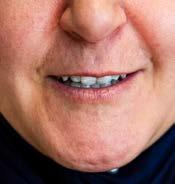




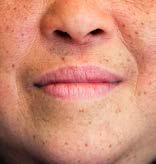


















How do languages connect communities? And how do they enrich our neighbourhood? In this series of articles, we explore what it means to live in an area where at least 88 languages are known to be spoken.
Photos by Eoin Carey






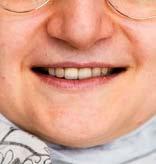



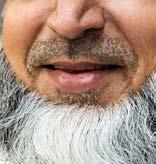

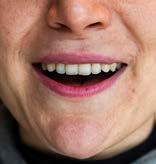
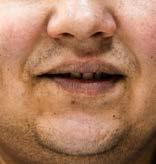

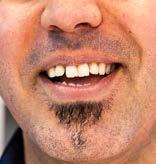












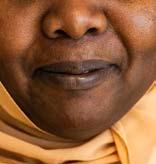





Intro by Ania Noakes
One day my driving instructor was marvelling at my ability to spin so many plates at once. “I hope you get some time in lieu for all that hard work,” he remarked. I misunderstood the meaning of the question and responded: “Of course we can go to the toilet during working hours!”.
Does this mean that I failed at English and I am not ‘a bilingual’? No. But what actually is bilingualism and multilingualism – and what are some of the advantages and disadvantages that come with it?
The linguistic definition of bilingualism and multilingualism is an ability of an individual to communicate in two or at least three languages respectively. Over the years, there has been a lot of discussion amidst scholars about the degree of fluency a person must have in order to be considered truly bi- or multilingual.
The stance used to be that the grasp of each language has to be near ‘native level’. However, these days, linguists agree that the way we use languages on an everyday basis and communication are more important than officially measured fluency. And rightly so. The needs and uses of the languages differ from individual to individual, as a multilingual person acquires and uses their language for different purposes, in different domains in life and with different people.
Some of the perks of knowing multiple tongues can include expanding our perception of the world around us. We can make meaningful connections with others. It makes us more tolerant, open and perceptive people.
What’s more, research has linked learning two or more languages from birth to developing an ability to effectively manage higher cognitive processes. It also has been linked to a reduced risk of developing dementia and restoring normal mental function following a stroke.
But try as you might, becoming fully proficient at all the languages that you speak is near impossible. As the environment changes, the needs for particular language skills also change – inevitably, it may lead to vocabulary loss and other languages becoming dormant.
There is also a risk of losing our cultural identity. Language and culture are strongly tied together, which means that if we use our native tongue less, we may drift away from our traditions, values and even religion. Research shows that many bi- or multilingual speakers in this country lose the minority language completely and end up speaking only English. It can leave a person feeling lost between two countries, fitting in neither here nor there.
There are as many stories around bi- or multilingualism, as there are people. Everyone has their own to tell. Especially here, in Govanhill.
There are around 115 languages spoken by children in Glaswegian schools. Across Scotland, according to 2011 census data, the most popular languages spoken at home after English were (in order of popularity) Polish, Urdu, Punjabi languages, Chinese languages, and French.
According to a survey carried out in 2020, there are at least 88 languages spoken just in Govanhill.
IRoma • Hungarian English
live in Govanhill with my parents and five siblings. Me and my family moved here twelve years ago when I was five. We speak Hungarian, Slovak-Roma and English at home. My dad doesn’t speak much English and my mum none at all.
When we first got here, I couldn’t speak any English and I taught myself by watching sitcoms and musicals like Grease. I also watched telenovelas because the sounds and some of the words reminded me of Roma.
These days, me and my siblings speak English amongst ourselves when at home and some of my younger siblings can only speak English. This can get quite annoying in our house because they aren’t able to talk to my parents.
Sometimes I will have to miss school to help my mum and dad out with things like going to the doctors and Universal Credit appointments. It can be really frustrating and I wish places had more facilities for Roma people. In places like Derby and Leicester they have Roma translators but I don’t think there are any in Scotland.
Saying all this, I do really love living in a house and community where lots of different languages are spoken. It’s funny, I’ve noticed how I will always say ‘aye’ at the start of a sentence, no matter what language I’m speaking. I love the uniqueness and coolness that I can speak and translate into three different languages. I find it empowering that I can use my skills to help out my family.
I’m a triplet who grew up in the Highlands. My family come from South Uist and Glasgow; Gaelic and English were spoken each day. I would march down the high street, bagpipes blazing like my dad and his brothers before me, which makes me… incredibly Scottish. I feel blessed to have experienced so much traditional music, ceilidhs, Fèis, The Mòd, and importantly Gaelic.
A strong teuchter accent is something I’ll always associate with home and find comfort in. Most of this admiration and appreciation comes from my Granny Nellie who grew up on a croft on Benbecula; she was the kindest soul and spoke Gaelic before English.
Experiencing conversational Gaelic with that side of my family where the language is still spoken fluently felt beautiful. When we were in public it was like Gaelic was our secret language and Nellie enjoyed that, how we would giggle.
My household fostered a deep connection to Scotland’s ancient practices, rich history and tapestries of culture – celebrating and upholding tradition and not forgetting, diluting or dissolving into a ‘British’ identity. Now, I speak Gaelic when I can and lucky for my Govanhill neighbours the pipes are in the Highlands. Gàidhlig fhada beò. Neo-eisimeileachd a-nis.
Being able to communicate is the fundamental key in our communities and families. What maintains a lively community is communication. That’s why the two words sound similar. When it comes to family, communication is even more important as poor communication can spoil relationships.
In families like mine where different languages are spoken this can be a big challenge. I am a Ugandan and I grew up speaking Luganda. My children’s father is from India and is fluent in Hindi and Punjabi. For both of us, English is a foreign language but I am more fluent than him, as in Uganda we learn English in school whereas he didn’t. Our children only speak and understand English – it is the common language at home between us all.
Here comes the challenge in communication and family life. It is easy to address an issue in your most native language but harder for me in English.
These days, I barely speak Luganda except sometimes when on the phone to friends and family. Although I try to teach my children Luganda, it is hard because I don’t communicate regularly in it anymore.
It would be great to teach our children all languages spoken at home and it would be good for all our mental health too. But I also want to say it is also so mindful to not exclude someone and to communicate with one another in a common language.
I’m mother to a three year old whose father is Spanish. Up until recently she understood Spanish but answered in English. However in the last couple of months she’s had this enormous leap and I can’t believe how much Spanish she’s speaking. It’s blowing my mind. My Spanish in comparison is dreadful. I know lots of nouns and infinitive verbs but the vast sprawling tapestry of grammar that houses them is still totally beyond me. I thought I could learn alongside my daughter but her learning capacity is so huge, and her self consciousness so non-existent, she’s left me for dust. One night she was having a bad dream and talking in her sleep and I had no idea what she was saying. I had to consult Google Translate to understand
what kind of bogeyman she was dealing with.
The funny thing is that I was bilingual as a child with English and Gaelic and despite all her efforts my mum could never quite master Gaelic. I sometimes worry this is my fate too, to always be on the outside of this part of my daughter’s life. But then, of course, I remind myself that my mum didn’t have Duolingo in those days, nor the option to dub her favourite TV shows in Spanish, so there is hope for me after all. Yo sólo creo que necesito trabajar más duro!
At home, I speak Slovak and English with my kids, depending on circumstances and social situations. I believe bilingualism is an asset and maintaining the use of Slovak when talking to my children encourages daily usage.
While this isn’t always easy, corrections are made and understanding that perfect grammar can be learned later. A second language stimulates the brain, fostering a positive attitude towards linguistic diversity. We frequently discuss the meanings of words in different languages learned at additional language classes at and outside school.
My kids were brought up here and so I guess me and my children have different native languages. I constantly learn new English words, both outside and within the family. My children predominantly learn Slovak vocabulary from their parents.
I use Slovak for expressing affection but switch to English for discussing pragmatic details or helping with homework. My children say they find speaking Slovak unique and feel happy being bilingual, and that outside the house, English feels more natural, while family-related matters are easier expressed in Slovak. Language is dynamic, and nearly two decades in Glasgow have certainly influenced my vocabulary. While I don’t do accents, I do have one: a broad Slovak.







who moved their entire lives all the way over to the West.






Sorbus aucuparia
Folk names for plants also tell us cultural and spiritual practices and associations. In Gaelic, rowan is known as fuinnseag-coille which translates to ‘wood enchantress’. In Scotland and Ireland in particular, rowan has long been associated with witches, not least because of the five-pointed star that appears on each berry. Rowan is known as a witches’ tree and as a tree to protect against witches. Tradition holds that a beam of rowan wood above the hearth will protect a household from dark forces, but to fell a rowan tree is to bring curses upon yourself. In Viking mythology it was believed that the first woman grew from a rowan tree. In Celtic mythology, it is a symbol of Brigid, who is the Celtic goddess, turned Christian saint, of midwifery, weavers and healers among other things. Rowan berries are still used in protective magic, dried as beads to make garlands and jewellery, as well as medicinally in syrups and jams to support the immune system.
Chew on a fresh leaf. It’s bitter, and increases saliva production. This communicates one of the dandelion leaf’s main medicinal actions; stimulating the digestive system and allowing the water to digest food more efficiently. Folk names for dandelion include cankerwort referring to the folk use of the sap from its stems to treat warts and cankers; dents-de-lion in French or lion’s tooth in English, describing the shape of the leaves –a handy reminder for plant identification. Also in French, another name –pis en lit –translates to ‘wet the bed’ referring to the leaf’s affinity for the kidneys and urinary system.
By Beti Scott Illustrations by Indrė



The Victorians devised a secret code, a language of flowers, by which they could transmit secret messages between those in-the-know. Specific flowers carried different meanings, and combined in posies –or to use the parlance of the times tussie-mussies –could convey secret love, gratitude, friendship, even rejection.

But the language of plants goes deeper than simply their use as props in illicit affairs of the heart. Plants seem to have a language of their own, with which they communicate to us their medicinal properties. In turn, humans have developed various ways of transmitting plant lore, knowledge and medicinal uses of herbs and other plants. The following plants can all be found in Queen’s Park and demonstrate some of the webs of communication between plants and humans.




Achillea millefolium


Yarrow’s appearance, like many plants including the berries mentioned above, gives clues to some of its medicinal uses. The feathery, fern like leaves not only gives it the millefolium (meaning thousand leaves) name, but the fractal patterns of the leaves when closely studied bring to mind the knitting together of tissues, or in fact the circulatory system within the body. Yarrow is used commonly as a first aid herb for wounds for it’s ability to purify the blood, staunch excessive bleeding and support tissue healing. This phenomena, of plants looking like the body parts and systems they are used to treat is known as the doctrine of signatures . Whether clues left by the Creator, as has been believed in many healing traditions, a handy mnemonic device for budding herbalists, or direct communication from the plants themselves, examples include the appearance of tiny eyes within the flower of the eyebright plant, which can be used to treat conjunctivitis, irritation of the eye and streaming eyes from allergies; the brain-like appearance of walnuts which contain omega-3 fatty acids which can support cognitive function and the glossy, erect strands of the horsetail plant which contains silica which supports with musculoskeletal issues as well as making hair glossy and strong.


Rose Rosa sp.
Rose too, is famed for its thorns, which feature in everything from fairy tales to pop songs. The contrast between the pillowy petals and enticing scent with the pain of a prick makes the rose an enduring metaphor. With so many varieties of rose, there was even a distinct dialect within the Victorian language of flowers, with the wild or dog rose (Rosa canina) standing for pleasure and pain. When foraging, either for the heady-scented petals or nutrient rich hips of the rose plant, thorns remind us to practice ethical foraging, not taking too much, while leaving some for the birds, insect and other non-human friends, and listening to the plants “no” when we get pricked, taking that as a sign to move onto the next plant. In this way, roses assert their own boundaries. Rose’s medicine in turn supports our boundaries, either as an astringent, shoring up our body tissues’ integrity to protect us from pathogens or on a more emotional and spiritual level, allowing us to take heart. Another way rose –particularly rosehips –communicate with us is through the language of colour. Rosehips come in many shades, from bright orange to almost black, and the hue gives us an insight into the particular chemical makeup of the fruit, orange tends to be high in vitamin C –and darker tends to be higher in antioxidants.
Hawthorn Crataegus monogyna
Like the rowan, hawthorn is steeped in folk tales and beliefs that communicate wisdom through the ages, including a prohibition against the felling of a hawthorn, lest you anger the fairy folk that live in it. This belief is particularly prevalent in Ireland where hawthorn trees are often left in fields where other trees have been removed. A taxi driver once told me “dinnae cast a clout ‘til the may is out” –commonly misunderstood by gardeners to mean don’t plant out seedlings until the end of the month of May. But the ‘may’ actually refers to the flowers of the hawthorn tree, which are also known as may flowers or may blossoms. Tradition holds you should not bring may blossoms into the house, or else risk inviting death in. Although the small, white flowers of the hawthorn are dainty and sweet looking, the association with death is unsurprising when you smell them –they contain a chemical called trimethylamine which is present in decaying flesh. To the human nose, this is like foul language, an olfactory swear word, but to an insect pollinator of hawthorn, the smell of death is an enticing love note, a whispered sweet nothing. Another association that ties hawthorn to death is the theory that the crown of thorns worn by Christ during his crucifixion is thought by some to be made of hawthorn.
Beti Scott and Indrė Šimkutė are facilitators with Movement In Thyme CIC which aims to build sustainable, resilient communitie s, improve mental and physical wellbeing and reduce social isol ation through herbal medicine, community workshops, movement activiti es and gardening. They run workshops and a Community Apothecary where you can pick up pay-what-you-can herbal remedies. Find them on social media @movement_in_thyme.

Dive into Home Energy Scotland’s energy saving quiz for chance to snag a selection of fantastic prizes! You’ll also unlock valuable tips that will save you money on your energy bills, and shrink your carbon footprint. There are only 5 quick questions standing between you and the chance of becoming one of the 25 lucky winners in Scotland.
Enter here:

Competition closes at 11.59pm on Sunday 24 March 2024



Welcome to your Neighbourhood Yoga & Pilates Studio
We’re glad you’re here with us.
Honouring the traditions of yoga + investing in your own personal growth.
Our community is one of inclusion, that strives for equity, is Black-owned & commited to getting better at honouring the roots of yoga in the West

www.studio70glasgow.com

By Victoria-Reina Gil
Photo by Rhiannon J Davies
Visiting Annette Street Primary School for the first time, I felt intrigued at how a linguistic and culturally diverse crowd of children, many of whom have little or no English would interact with their teachers and peers. After all, how many times have we heard about language barriers and cultural differences as a reason for mistrust and conflict?
As a language teacher I had done a little homework before my visit, and what I found revealed that this school may well be a hidden gem.
Bearing in mind that 62 percent of the UK population cannot speak any second language, I was amazed to learn that these kids may hear 17 different languages in the playground daily –including Romanes, Urdu, Ukrainian, French, Romanian, Slovakian, Arabic, Pashto and Punjabi.
However, as much as I loved this thought, I could also anticipate some challenges. So I wanted to know more about the approach used by the teaching team.
In the reception area, the pictures and messages on the walls brought a smile to my face as it quickly became clear that these kids´ first language was valued and proudly displayed wherever I looked.
The ‘Language of the Month’ was Czech, so on every floor you could read how to greet in Czech (ahoj). There were flashcards with pictures and words and a map to show where this language is mainly spoken.
Sitting down in the library with Depute Headteacher Wendy English and some of the English language support team, I learned that after years of hard work from this incredible team, many success

stories were starting to emerge, with former pupils going on to university and also to work in community engagement roles to support other young people in Govanhill.
The school also provides a platform for these kids to become ‘Young Interpreters’, encouraging these young learners to facilitate communication, to become that valuable bridge that will enable understanding. For my university language students, this skill is one of the most challenging to master. To think that for these kids, this is part of their daily lives is mind blowing.
To achieve that, these teachers have had to create an atmosphere in the school which would make the kids feel safe and valued. Later on, when we went round into the classrooms accompanied by Ms English, who would engage in brief conversations with pupils in their first language, I saw firsthand that these children love coming to school because, as one pupil said, “there is no fighting”. They enjoy learning (maths and literacy were favourites) and they were in a place where their first language was valued, and their cultural identity was not suppressed, but celebrated.
Through home link workers and a close relationship with families they also celebrate cultures in different ways – by sharing different foods and through music. For International Roma Day, the school assembly turns into a party as parents help out playing Roma tunes and everyone gets involved with singing and dancing.
Attendance has historically been below average in schools with such a cultural diversity, but this is something they are working hard to turn around. Each morning, principal teacher Heather Craig phones up the families of pupils who haven’t shown up for class and even knocks on doors when necessary. This effort has seen attendance figures rise significantly in the last year.
They also work with families to get across the value of education for their kids so that regular attendance, knowledge acquisition and success are seen as closely intertwined. It is encouraging to know that some young learners will be continuing their journey in education. I cannot wait to have them as my students at university, making use of those valuable skills they have.
Progress is being made, but I was disheartened to learn that local families with English as their only language are somehow reluctant to send their kids to this school. I have heard so many times my adult students saying, “I wish I had learned other languages before”, “I love to see my kids playing with other children when abroad even if they do not share the same language”.
Well then, how is it that we do not embrace opportunities when they are next door? Is it because we fear our children will be at a disadvantage? Do we think their attainment record will be lower than average? Do we picture these classrooms as chaotic or silent?
What I saw during my visit was much the opposite. These children showed a willingness to engage with their peers and visitors; they were welcoming and respectful, always keen to speak up and say how much they loved their school, their teachers and the subjects they were learning. What else could you ask for?
Leaving Annette Street Primary School, I felt grateful to a dedicated cohort of teachers and support staff who care and nurture these children in their desire to learn and share their skills with others.
These children will flourish provided they are well supported by their families and our secondary and further education sectors once they leave primary education. The protection of these languages and identities is key to the development of a thriving community where we share and learn from each other.
By Altaf Hossain Russell & Dr Saif Khan
In political science, language is known to be an essential element in nation building, as it is inextricably linked with a person’s psyche. This, in extension, moulds the culture and ethnicity of a nation.
When the father of Pakistan, Mohammad Ali Jinnah, announced in March 1948 that Urdu would be the sole state language of Pakistan, it is not surprising that discontent engulfed the majority Bangla-speaking people of what was then East Pakistan.
In the face of these tensions the government outlawed public meetings and rallies, but on 21 February 1952, intellectuals, students and people of all walks of life came out on the streets of Dhaka to protest – waking up in a common spirit to protest the right to their language.
The names of Salam, Barkat, Shafiur, and teenager Oliullah are but a few of those who lost their lives on that day, when armed forces opened fire on processions for recognition of Bangla as the national language. The movement continued for several years until finally, in 1956, the government of Pakistan was forced to grant Bangla the status of state language.
Since then, Bengalis have commemorated 21 February as Amor Ekushey or Bhasha Shahid Dibosh –Language Martyrs' Day. This date was adopted as International Mother Language Day by UNESCO in 1999, and since then it has been recognised worldwide.
That event in 1952 fundamentally challenged the imperialist concept of nations defined by religion. Eventually, in 1971, Bangladesh emerged from East Pakistan as an independent nation under the leadership of Bangabandhu Sheikh Mujibur Rahman. It established that in some societies, cultural and ethnic identity is stronger than other identities.
In an increasingly globalised world with economic expansionism dictating everything, including how we speak, the need to have somewhere we can all

celebrate our differences linguistically drove Bangladesh Association Glasgow (BAG) to create BHASHA (meaning language in Bangla) – the Glasgow Language Festival.
The then BAG President Saif Khan, GS Md. Nasiruddin, the late Vice President, Mrs Mridula Nasreen Sarwar, and Cultural Secretary Mrs Anindita Huq worked tirelessly to create a platform of like-minded people, organisations, and the linguistic community of Scotland for the continuation of the festival in the future. This came to fruition in 2019 when the first festival was held.
Working with the Glasgow City Council Open Museum, a plan was made for a day-long festival in the Mitchell Library which would include a mixture of talks on various aspects of language and linguistics, interspersed with languagerelated entertainment. There was a display of books, leaflets, and flyers from organisations that work with language in Scotland.
Professor Alison Phipps, UNESCO Chair in Refugee Integration through Languages and the Arts, who became a patron of the festival, came up with the motto of ‘BHASHA: Our Gift to Glasgow’. It brings all the different language speakers of Glasgow together as an expression of our legacy and a way of saying thanks to our adopted homeland.
In that first festival, a video of Shakespeare’s Romeo and Juliet performed entirely by disabled theatre artists in Bangladesh was premiered. British Sign Language interpreters conveyed the whole festival to the audience. The BAG theatre team retold a famous historical drama on the killings of language martyrs called ‘Kobor’ (the Grave) written by Munir Choudhury. BAG trustee Tareq Abdullah penned a new drama based upon the original and called it ‘Kobor: Otohpor’ (the Grave: After). It was a very emotive presentation. Since that successful first festival day, BHASHA has not looked back.
The 2020 BHASHA was a multilingual cultural event featuring songs, drama,
storytelling, poetry recitation and food from all over the world. Despite the pandemic, in 2021, the festival was held online over the course of a week with help from Thriving Places Govanhill, Bilingualism Matters, Greater Govanhill CIC and the Open Museum team.
In 2022, on the 70th anniversary of Language Martyrs Day, the opening ceremony was held at the Kelvingrove Museum. To commemorate this special anniversary, the then President of BAG, Tareq Abdullah took the initiative to create a scale model of the iconic Shaheed Minar, the national monument in Dhaka which commemorates those killed during the 1952 demonstrations. It was made by the students of the Department of Architecture of the Bangladesh University of Engineering and Technology (BUET) and brought to Glasgow.
Migrant Voice joined BAG and Open Museum to organise the 5th edition of BHASHA last year. Along with the usual language related activities, for the first time, the festival featured a single language - ’Ukrainian’ that year.
This year BHASHA was organised by BAG with Migrant Voice and Open Museum. The exciting new prospect is the UNESCO-RILA team of Glasgow University becoming a partner. The festivities were split into two sections. In February at Kelvingrove Museum and in May as part of the University’s own programme featuring ‘Words’. Negotiations are in the process of formulating how BHASHA friends can engage in the second segment.
Over the course of five years, we observed more partners joining the journey of BHASHA. The festival remains dynamic and its original vision evolving. In an increasingly cosmopolitan Glasgow and particularly in the incredibly multicultural neighbourhood of Govanhill where there are at least 88 languages spoken, why not take the opportunity to enlighten yourself about languages and celebrate linguistic diversity?
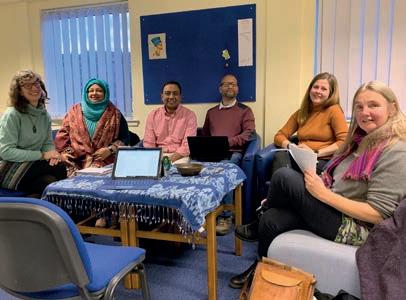

By Zara Grew Photographs by Miriam Ali
City of Empire is a new community-led exhibition at Kelvingrove Art Gallery and Museum that uncovers Glasgow’s deep-rooted links to empire and slavery. Zara Grew met up with the community curator Sehar Mehmood to find out more.
When walking around City of Empire at Kelvingrove Museum, you are confronted with Glasgow’s colonial past and present: a school desk, a racist textbook, and a cardboard ‘Black Lives Matter’ sign. These tangible elements are interspersed with multimedia video instalments which further explain the impact of slavery and empire in Glasgow today. While these are heavy subjects, the exhibition has a widely accessible and conversational tone, telling person and community centred stories.
The exhibition’s curation was led by a team of four young people from the Our Shared Cultural Heritage (OSCH) Changemakers group: Miriam Ali, Meher Waqas Saqib, Kulsum Shabbir and Sehar Mehmood. These community curators took responsibility for delivering different sections of the exhibition.
I caught up with Sehar who worked predominantly on the section titled ‘We’re Here Because You Were There’, which collates together news articles about brutality and violence towards
minority ethnic people in Scotland. Sehar’s work on recontextualising news articles – within a space where they can be observed – encourages viewers to consider and understand the experiences of these communities.
Sehar grew up in Govanhill and has previously written for Greater Govanhill. Her passion for community activism and promoting accessibility in the arts and culture sector is transparent in her work.
“I am a community curator because I’m a member of a community. I think
that the word community makes it feel more accessible to everyday people. There is a huge line between the museum and art gallery sector and the public, and it shouldn’t be like that. Museums and galleries have a responsibility to tell stories and to educate the public.”
The City of Empire exhibition is part of an initiative by Glasgow Museums to incorporate underrepresented communities into the work that they do. When asked about the timeline for the project, Sehar responded: “It is hard to pinpoint when we started working on the exhibition. It was two years in the making but people have probably been fighting for this since the museum opened in 1901.”
Kelvingrove, much like the rest of Glasgow, has strong links to colonialism. Some of the money earned from the international exhibition of 1888, which was funded by – and promoted – the empire, was used to open the Kelvingrove Museum in 1901. Sehar said: “The international exhibition was all about culture, art, science, and travel. It completely exploited human stories and communities.”
Despite being erased from social history, Sehar explains that the ties between Glasgow and empire are embedded in the foundations of the city.
“If you want to see the link between Glasgow and slavery just go for a walk. Over 62 streets and areas in Glasgow have a link to empire and slavery, for example, Jamaica Street. It is a systemic issue that museums and schools never talk about.”
Museums have famously been places of appropriation and constructing problematic historical narratives. Sehar rejects the conventions of what an exhibition ‘should’ be and instead relates to a BAME audience by representing lived experience:
“This exhibition is not for the white majority audiences as has always been catered. It’s for people of colour to feel validated and accepted and think ‘We are here’. My idea was to engage young people and the best way to do this was to give them reminders of their families and communities who came to Glasgow because of colonial violence and the legacies it left in their home country. I wanted to make the exhibitions as relatable and grassroots as possible.”
A key part of making the exhibition accessible was narrating recent history through newspapers. These familiar items have a deeper cultural significance as the media’s language and rhetoric have a notable influence on public opinion.
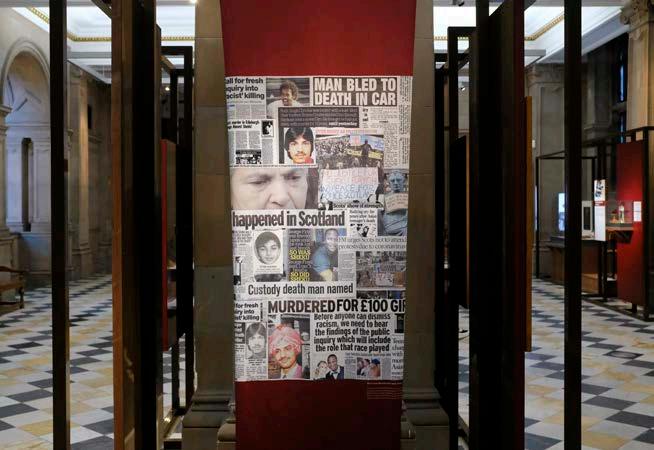
Through self-led research, Sehar used a collage form to display newspaper articles from the trials and murders of Black and South Asian men who were victims of racial violence.
“I get emotional talking about the newspaper collage. I didn’t anticipate how much the research would impact my emotions. I was watching these cases as if they were happening. The museum wasn’t ready for the pain that this caused us because we were learning about violence constantly, violence that has been done to our communities”.
Sehar explains the importance of using language to ensure the exhibition is a collective and accessible space. The exhibition challenges the language we use around slavery and empire and a key consideration in the development of the project was the discourse around the term ‘minority’.
“In preparation for the exhibition, we decided to use the term ‘people of the global majority’ and I think this is an important choice as the extent of the wider impact is revealed. It is a majority history against a white minority who colonised us. I used the collective pronoun ‘We’ because I wanted the exhibit to feel like it is for us. We, the community, the collective – Govanhill has always made me feel that way.”
Sehar credits the community of Govanhill as an inspiration for the exhibition: “I hope the people of Govanhill visit and feel seen and connected to the exhibition. It is not a love letter but an acceptance letter, because I see your history. People have forgotten but I won’t forget.”
Head to our website to read interviews with the other curators from the City of Empire exhibition, including the photographer for this piece Miriam.


Marzanna Antoniak is an ESOL teacher and former Community Connector in Govanhill. Here she reflects on teaching English in the community and asks community organisations about how they overcome language barriers in their work.
By Marzanna Antoniak
In July 2015, I began working with Govanhill Community Development Trust as an English to Speakers of Other Languages (ESOL) teacher. Right away, I realised how teaching in the community is very different than in a formal education setting.
One reason for this is that many of my learners had limited experience of education in their countries of origin. This might be because, for example, they were: brought up in remote locations; the oldest female sibling who cared for others; earning a living from a very young age; experiencing displacement due to war and other crises; or being severely bullied at school for being Roma.
In my classes I also worked with learners who couldn't see well and those with hearing impairments, which influenced the techniques I was using. Being able to offer childcare and make provisions for breastfeeding proved crucial too.






You have to be mindful of learners’ day-to-day lives. Community classes make allowances for students coming in late or leaving early due to appointments and other commitments, and for sudden disappearances due to changes in life or work circumstances. Because of this, I had to come to terms with the fact that some of my learners would need to start their learning journey almost from scratch whenever life circumstances forced them to take breaks from my classes.
The goal, therefore, was to keep them motivated and to create opportunities for them to learn outside of the classroom. And so, I resorted to devising lessons centred around local places such as shops, health practices, parks, and public buildings. This way, my learners had a chance to talk about their Govanhill favourites and, what mattered most, I knew they’d later be able to practise reading the names of the streets and signs whilst going about their daily business.
Living in a community like Govanhill, knowing English is not the only way you can communicate. And so I’d turn the tables from time to time by asking my learners to teach me some words in their native tongues. As soon as people start feeling comfortable and appreciated for who they are and what they have to offer, the language barrier seems to disappear and they are able to be thoughtful and funny, becoming much closer to who they identify as when communicating in their native tongues.


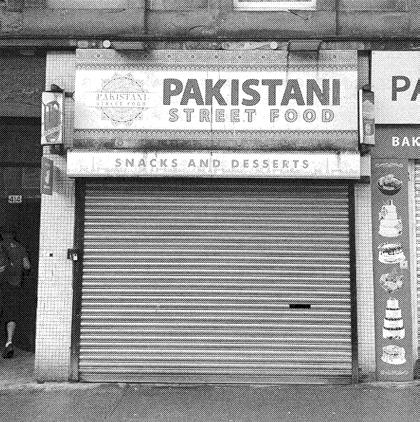

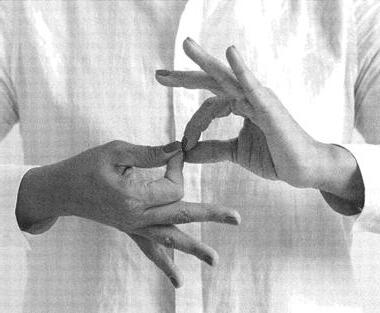

How you teach in the community also depends on factors such as the age and specific needs of local people. With my Slovak Roma youth group, the youngsters practised their English through conversations based on pop songs or lyrics, arts and crafts, and guided me around the neighbourhood with much singing in Romanes happening along the way.
Community ESOL can be much more adaptable than formal courses. It is much easier to identify and respond to learners’ needs and build on their interests, to share relevant local information and refer individuals to other organisations.









By Gabby Cluness, Cofounder/Director
When I think about it, I am surprised at how little a language barrier matters when it comes to forming a bond with someone. Though that is not to say it can’t make it tricky. I have been working with people learning English as a second (or third/fourth/fifth) language for years now, yet occasionally still have to be gently reminded that speaking in a louder voice isn’t a proven teaching technique. The bare bones of connection, however, don’t need to depend on a shared language.
Here at MILK, we find so many ways to communicate with each other that are non-verbal; food, touch, frenzied gesticulating… I have exchanged jokes, feelings of irritation and stories of loss, with folk who have only a smattering of English.
The community connection sessions, which form the core of MILK, have been running in some form or other since the very start of our project. Participants have engaged in activities from sewing banners for the Govanhill festival, to writing poetry about displacement.
Some of those who come speak fantastic English, and many don’t, but we try to ensure that our sessions are inclusive regardless. Human beings have such a beautiful capacity to make connections with each other no matter what. So much can be conveyed through gesture and expression; a well-timed eye roll; joy over a new baby and their perfect soft feet; shared disgust over the rotten weather and the January bin situation. Through MILK I have sat with people from all over the world feeling the full gamut of emotions; aware of the limitations of our linguistic compatibility but, regardless, sharing so much.
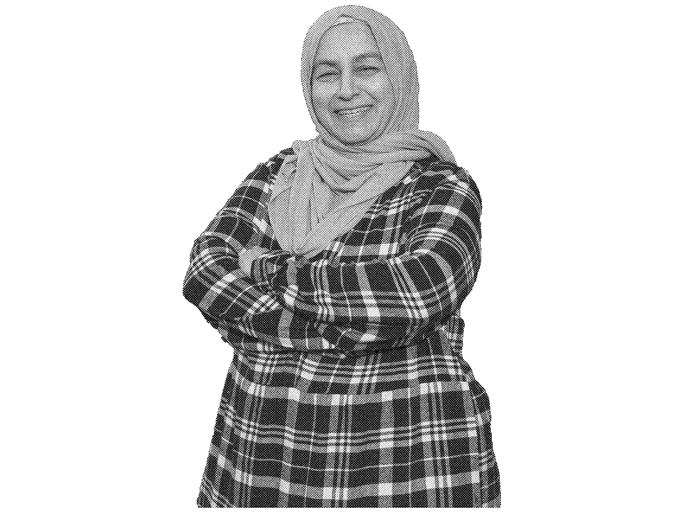
At SEMDC, we welcome all people who are deaf and from an ethnic minority to join us in meeting new people and learning new skills. Member led, we strongly encourage members to communicate in British Sign Language (BSL) and work with partner organisations to promote equality, diversity and advocacy – ensuring all members’ individual needs are supported.
Many of our members come to us without fluency in BSL. Some reasons for this include knowing only their home country sign language, using international signs, using a mixture of signs and gestures or having no knowledge of a signed language. We provide opportunities for members to learn BSL and to learn from their peers. In addition, we provide a unique deaf relay interpreting service which means deaf people communicating without BSL fluency have access to language and communication support.
Our knowledgeable and highly experienced deaf staff are all grassroots sign language users, who can break down BSL to a level of understanding for the deaf person who is not fluent in BSL. This is done by a deaf member of staff, working as deaf relay interpreter alongside a proficient BSL interpreter. The process is reversed when the deaf non BSL user needs to respond to the English. It’s a skilled practice which sounds complicated but in practice is extremely efficient and allows the deaf non BSL user equality, respect and autonomy.
By Huda Alarishi, Chairperson
The Scottish Arab Women’s Association has built a legacy of communication and language. Through conversing in a language that connects so many people, a community language has been born and will continue to flourish. With 28 letters and over 23 dialects, the Arabic language has bridged gaps created by borders and colonialism and has healed the wounds of broken communities into one. Through the work that SAWA offers, we have been able to provide support through this community language.
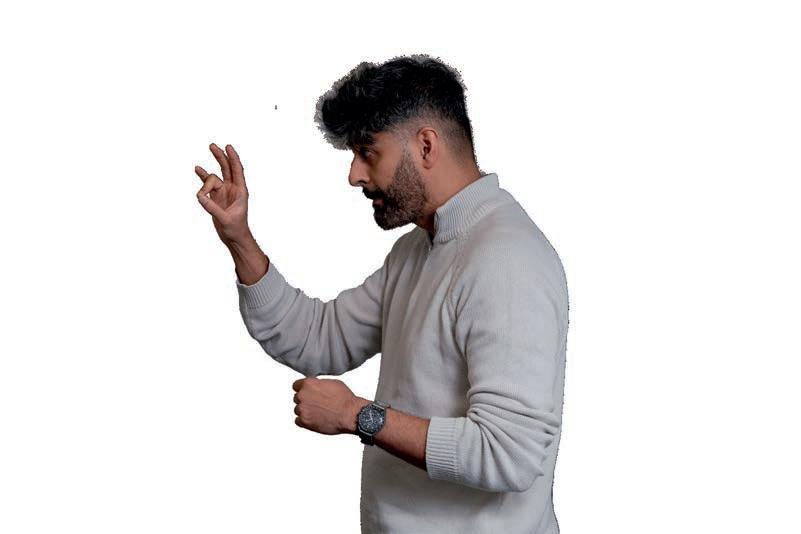

The value the Arabic language holds is immeasurable. Everybody who’s part of SAWA has a bond to the Arabic language, whether it be a spoken element or cultural element. We like to exercise this point by hosting a number of ways of connecting with the Arabic language through teaching, experiencing and understanding. Community languages are core to life and human experiences. Learning and actively using community languages like Arabic are and will continue to be a form of cultural preservation and
By Lottie Hanwell | Illustration by Hannah Moshtael
Not all of life’s maladies can be resolved in a 10-minute GP appointment. This is particularly true in the most deprived areas, where the prevalence of patients with complex health needs outstrips the availability of GP appointments.
Glasgow is home to 80 percent of ‘Deep End’ GP practices, a network of Scottish GP surgeries covering the most socio-economically deprived populations. With limited resources and high demand, GPs in the Deep End have limited capacity to get to the bottom of their patient’s problems – especially when those problems are rooted in social circumstances. This is where community link workers like Govanhill’s Leanne Jamieson come in.
Community link workers aim to address the social determinants of health; the nonmedical factors that greatly influence health outcomes – from our living and working conditions, to our access to healthy food, education and relationships with others.
Their job adheres to ‘social prescribing’ – a holistic approach to health and wellbeing that connects people to non-medical support in their local communities. This might mean directing someone who’s been feeling lonely to one of Govanhill’s community cafés, or supporting people to keep active by accompanying them to local walking, dance or gardening groups. “It’s about recognising how personal and social circumstances can have a massive influence on mental and physical health,” says Leanne.
With an intimate knowledge of groups, activities and resources available locally, community link workers play a crucial role in mapping local support systems – keeping individuals and GP practices up to speed with the services available.
“The main luxury we have is time,” says Leanne. “GP appointments usually last 10 minutes, whereas we can have up to an hour, sometimes more… This helps us to really get in depth with people, looking at that bigger picture and understanding what’s important to them.”
Considering the vast range of languages spoken in Govanhill – over 50 in Leanne’s practice – interpreters often help to facilitate these conversations. “We’re quite fortunate to have access to in-house interpreters who can attend face-to-face appointments. I think that really breaks down barriers to sometimes quite difficult and emotional conversations.”
Anyone who has learned another language will recognise the difficulty of expressing complex feelings with a limited range of words and phrases. A listening ear, or a conversation in one’s mother tongue, can sometimes be as powerful as any referral, says Leanne: “I might not have been able to find the perfect resource for someone, but often people say: ‘I feel good just having a conversation about it, I feel listened to”. By acting as a conduit between primary care and the community, link workers are well-placed to identify unmet health needs. “I do think we can play a big role in addressing certain inequalities,” says Leanne. She highlights an example of how local link workers collaborated with community organisations and cervical cancer charity, Jo’s Trust to provide cervical screening drop-ins for Romanian and Slovakian speakers in Govanhill.
But the support provided by community link workers can only extend so far. Social prescribing is an individual solution, not a panacea for the broader, and much more systemic nature of health inequalities facing Govanhill – and Scotland at large. Leanne highlights that housing and financial difficulties account for between 40–50 percent of her caseload.
Link workers can direct people to food banks, or help them to apply for temporary accommodation, but the root of these issues extends far beyond the scope of social prescribing, requiring intervention at a policy and governmental level.
“Community link workers can’t solve systemic health inequalities,” says Roisin Hurst, who runs the Scottish Community Link Worker Network at Voluntary Health Scotland. “But they can certainly support people to get through the periods in their life where medical help is not all that they need.”
Towards the end of 2023, proposed cuts threw the future of Glasgow’s community link worker programme into question. Citing significant financial difficulties, the Glasgow City Health and Social Care Partnership, announced plans to reduce the number of link workers operating in the city by a third. The announcement drew a strong reaction from Glasgow’s medical community; a petition by GPs at the Deep End called on the Scottish Government to sustain funding for this vital community service. The government intervened, announcing plans to commit an additional £3.6 million to safeguard the community link worker programme for a further three years.
Glasgow’s community link worker programme is secure for now, but the long term outlook remains uncertain. “I think the reaction to the proposed funding cuts in Glasgow City highlighted just how much people care about community link workers and value what they do,” says Roisin.
“We’re certainly overdue a conversation on how to secure a sustainable model for community link workers in the long term.”


Tekst: Lottie Hanwell Grafika: Hannah Moshtael Tłumaczenie: Alicja Tokarska
Nie wszystkie przypadłości da się zdiagnozować podczas 10-minutowej wizyty w przychodni rodzinnej – zwłaszcza w najmniej uprzywilejowanych rejonach, gdzie liczba pacjentek_ów o złożonych potrzebach zdrowotnych znacznie przewyższa liczbę dostępnych wizyt lekarskich.
W Glasgow znajduje się 80 procent przychodni należących do grupy
Deep End. Zrzesza ona szkockie przychodnie rodzinne znajdujące się na terenach zamieszkałych przez ludność doświadczającą największej deprywacji społeczno-ekonomicznej. Ograniczone zasoby przy wysokim zapotrzebowaniu na usługi ze strony lokalnej populacji mocno utrudniają pracę przychodniom z grupy
Deep End – największe wyzwania sprawiają personelowi kłopoty zdrowotne osadzone w sytuacji społecznej pacjentek_ów. Właśnie do takich zadań oddelegowuje się zespół Community Link. Leanne Jamieson to jedna z jego członkiń. Community Link Workers (w skrócie CLW) przyglądają się uwarunkowaniom społecznym związanym ze zdrowiem, czyli czynnikom spoza zakresu medycyny, które wywierają ogromny wpływ na ludzkie zdrowie. Są to m.in. Nasze warunki bytowe oraz pracownicze, jak i nasz dostępu do zdrowej żywności, poziom wykształcenia oraz relacje z innymi ludźmi.
spacerach lub zajęciach tanecznych czy ogrodniczych.
– Musimy zdać sobie sprawę, jak wielki wpływ na zdrowie psychiczne oraz fizyczne mogą mieć nasza sytuacja osobista i społeczna – mówi Leanne.
CLW mają dogłębną wiedzę na temat działających lokalnie grup oraz dostępnych aktywności i zasobów. Wiedzą tą dzielą się z odsyłanymi do nich osobami oraz z przychodniami rodzinnymi – odgrywają więc kluczową rolę w planowaniu lokalnych systemów wsparcia.
Zdaniem Leanne zespół CLW ma luksus, o jakim zwykła przychodnia może tylko pomarzyć. Chodzi o czas.
– Wizyta lekarska zwykle trwa dziesięć minut, a my mamy do dyspozycji aż do godziny, czasami nawet dłużej. Pozwala nam to dużo lepiej poznać sytuację osoby, z którą pracujemy, i zrozumieć jej priorytety.
dysproporcji społecznych – twierdzi Leanne.
Było tak na przykład wtedy, kiedy miejscowy zespół CLW nawiązał współpracę z organizacjami społecznymi oraz z Jo’s Trust, fundacją charytatywną działającą na rzecz osób chorych na raka. Leanne wspomina, jak dzięki tym działaniom udało się zorganizować w Govanhill badania szyjki macicy, bez potrzeby umawiania wizyty, dla rumuńsko- i słowackojęzycznych osób.
Ale CLW nie rozwiążą wszystkich problemów miejscowej ludności. Social prescribing zadziała w konkretnych wypadkach i nie można traktować go jako panaceum na rozległe, systemowe nierówności w dostępie do opieki zdrowotnej w Govanhill czy reszcie Szkocji. Jak mówi Leanne, 40–50 procent spraw, którymi się zajmuje, dotyczy mieszkalnictwa i finansów.
Chociaż zespół CLW kieruje potrzebujące osoby do banków żywności albo pomaga im ubiegać się o zakwaterowanie tymczasowe, to źródeł tych problemów social prescribing nie rozwiąże. Konieczna jest interwencja na poziomie polityki rządowej.


Rozwiązania, jakie CLW proponują osobom korzystającym z ich usług, zaliczamy do social prescribing. Termin ten odnosi się do holistycznego podejścia do zdrowia i dobrostanu, w ramach którego pacjentki_ci otrzymują w lokalnych społecznościach wsparcie niemedyczne. Co oznacza to w praktyce?
Na przykład osobie osamotnionej można polecić wizytę w kawiarni społecznej – których znajdziemy w Govanhill kilka – a komuś, kto ma trudność z aktywnością fizyczną, towarzyszyć w organizowanych przez lokalne grupy
Ponieważ w Govanhill panuje ogromna różnorodność językowa (osoby korzystające z usług przychodni Leanne mówią w ponad 50 różnych językach), nierzadko w pracę z CLW angażuje się tłumaczki_y.
– Nasza przychodnia ma to szczęście, że dysponujemy wewnętrznym zespołem tłumaczeniowym, który w razie potrzeby bierze udział w wizytach z udziałem osobistym – opowiada Leanne. Bardzo pomaga nam to rozmawiać z lokalną społecznością, zwłaszcza w trudnych i emocjonalnych sytuacjach.
Każda osoba, która kiedykolwiek uczyła się języka obcego, doskonale wie, jak trudno wyraża się skomplikowane uczucia przy ograniczonym zasobie słownictwa. Zdaniem Leanne możliwość zwierzenia się ze swoich problemów czy porozmawiania z kimś we własnym języku może zadziałać tak samo jak niejedno skierowanie lekarskie.
– Nie zawsze udaje mi się znaleźć idealne rozwiązanie dla danej osoby, ale często pomaga już sama możliwość rozmowy i zwierzenia się.
Ponieważ CLW stanowią swojego rodzaju spoiwo między systemem podstawowej opieki medycznej a lokalną społecznością, są oni w stanie doskonale identyfikować problemy zdrowotne, które wciąż wymagają rozwiązania.
– Sądzę, że CLW są w stanie odgrywać znaczącą rolę w wyrównywaniu niektórych
– CLW nie są w stanie wyrównać systemowych dysproporcji w dostępie do systemu opieki zdrowotnej – mówi Roisin Hurst, kierowniczka Scottish Community Link Worker Network, organizacji zrzeszającej CLW, działającej z ramienia fundacji Voluntary Health Scotland. –Oferują jednak wsparcie w momentach, kiedy sama pomoc medyczna nie rozwiąże problemu danej osoby.
Cięcia budżetowe, jakie zaproponowano pod koniec 2023 r., postawiły przyszłość programu CLW w Glasgow pod znakiem zapytania. Glasgow City Health and Social Care Partnership (Wspólnota ds. Zdrowia i Opieki Społecznej dla Glasgow) zapowiedziała, iż planuje ona zmniejszyć liczbę stanowisk CLW w mieście o jedną trzecią. Przyczyną ku temu mają być podobno trudności finansowe. Społeczność medyczna Glasgow zareagowała na tę informację ostro: lekarki_rze z grupy Deep End przedstawili szkockiemu rządowi petycję, w której nawołują do utrzymania finansowania na rzecz tych kluczowych usług społecznych na dotychczasowym poziomie. W efekcie rząd zapowiedział, iż na rzecz programu CLW przez kolejne trzy lata przekaże 3,6 miliona funtów.
Na razie o program CLW w Glasgow nie musimy się więc martwić, ale dłuższa perspektywa dla sektora pozostaje niepewna.
– Uważam, że reakcja na proponowane przez miasto cięcia doskonale obrazuje, jak bardzo lokalna społeczność ceni sobie pracę zespołu CLW oraz dostęp do jego usług – twierdzi Roisin. – Rozmowę o tym, jak zadbać stabilność i trwałość działań tego sektora, powinniśmy byli rozpocząć już dawno temu.

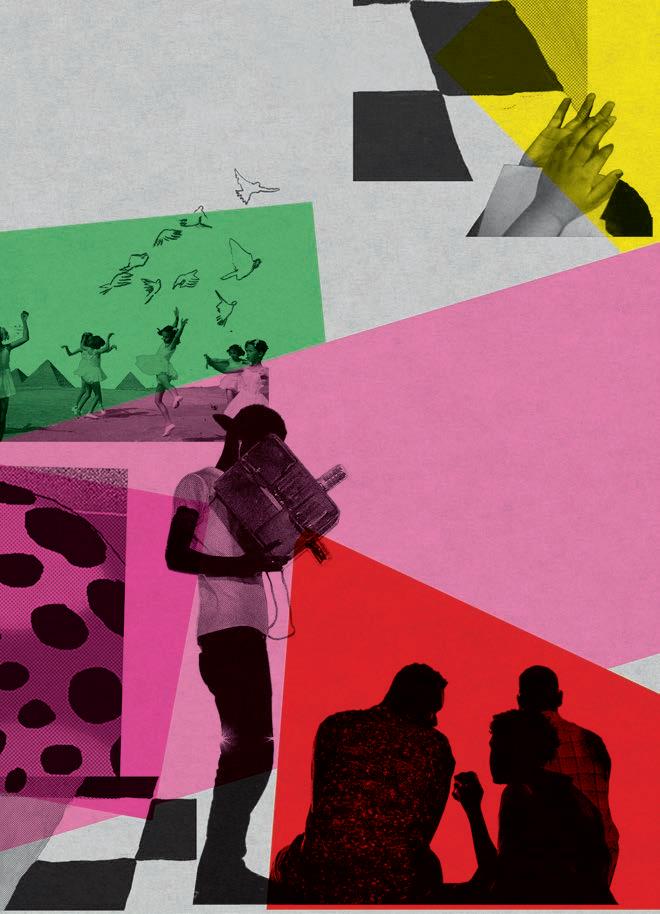

Last year the people of Govanhill got the chatbot they didn’t know they needed; a sharp-tongued weegie created by local playwright David Hewitson. We got comedian Bruce Morton to test it out.
By Bruce Morton
Ihad a conversation with Glasgow GPT, “the world’s first Scottish artificial intelligence chatbot.”
Given that most of my friends are dim, it seemed like a decent idea. The process is simple: open the site, type a question and the chatbot has a think and replies.
I ran some typical chat past it, the type you may say to a human, e.g. “What time is last orders” and “Where’s the nearest Arnold Clark’s in the Southside?”, this latter inquiry bringing a poison assessment of that car dealership, but suggesting I try Paisley Road West “right next tae the big Tesco.”
Broad enquiries about Govanhill brought some mixed remarks about the neighbourhood. So, I asked it where it is from in Glasgow. Its reply: Govanhill. I sensed wit.
This bot is a lot of fun. Most replies include a joke or two. Banter, even. A remarkable and positive description of the Polish Daisy in Govanhill referred accurately to the physical layout of the shop and its assorted produce and noted that there are “other treats that ye canna pronounce.”
The site declares that “GlasgowGPT has strong opinions about the world and will tell you exactly what it thinks about things.” I tested that by asking its views about Locavore.
I was almost convinced at this stage that GlasgowGPT was, as it had stated, born and bred in Govanhill. Granted, it often uses the word ken rather than the word know – very few Glaswegians use the word ken unless they are talking to a guy called Ken. But anyway, I decided to turn the heat up and and asked it to describe the Turing Test, which is a way to see if AI can display human intelligence. Fair play to it – the
reply was not just correct but candid, conceding among the details this: “...I’m just a snarky computer program wired up in a wee room.”
There was a melancholy in that. I wished I hadn’t asked, felt like I had become too involved and had deliberately tried to embarrass it and, so, immediately cancelled the follow-up question wherein I was going to ask its preferred pronouns. Clearly, after only a few minutes, this thing was messing with my head. I was now hooked.
Talking to Glasgow GPT is like having a walking tour around Govanhill where the guide is clued-up and sarcastic, a tipsy Scottish sage that you met outside Ramsay’s. The information is vivid and the language used is a mixture of Chewin’ The Fat and The Broons. I went back and asked it if it is a sage. The reply was self-deprecating. You have to give respect to the guy that built this interactive encyclopaedia and imbued it with modesty.
There is debate about the impact of AI. Doom-mongers raise questions about this technology. The only other types of mongers (fish and iron) seem ambivalent, but the doom-mongers are up to high doh. A chatbot can write an essay for you. Indeed, most of this article was written by Glasgow GPT. Some suggested paragraphs were fact-checked and removed by a human, including the notions that Kevin Bridges is a robot, Govanhill is a computer simulation and The Burrell Collection was created by a 3D printer.
It kinda feels like a pal, this program. But better informed than your human ones and you don’t have to sympathise with it.
Many folk clutch their phone in case something is about to happen: a like or an emoji or a picture of a cat or a photo
taken by someone standing in front of a mirror taking a picture of themselves taking a picture of themselves. Who really cares what you’d look like as a pirate? Among the drivel and waste of bandwidth to which we are accustomed occasionally comes a sparky idea. Glasgow GPT is one of those and probably has cousins in Mumbai, Seattle and Dublin. Its claim of Govanhill roots can’t be verified but it definitely has spent a lot of time in the area. The program contains mischief. Think about that. Now and again the digital world redeems itself.
“...I’m just a snarky computer program wired up in a wee room.”
Wh at ’ s O n
For more regular events and groups, or share an event, visit: greatergovanhill.com/noticeboard
FONDS at Tramway
When: Wed – Sun, from 11am–5pm (until 28 March)
Where: Greater Govanhill Community Canvas space in Tramway, 25 Albert Drive, G41 2PE
What: In this exhibition, the objects featured represent stories of migration, transformation, love and resilience. Take along a pair of headphones as images are paired with QR codes that link to the accompanying podcasts. Or listen in advance by searching for FONDS.
Ramesh Mario NithiyendranIdols of Mud and Water
When: Wed – Sun, from 11am–5pm (until 21 April)
Where: Tramway, 25 Albert Drive, G41 2PE
What: This exhibition features a diverse collection of multi-limbed figures, including fertility, guardian, protector, joker, and warrior sculptures. There is also an improvised temple made from repurposed materials.
Women’s Self Defence Classes
When: 6 – 27 March, from 1–2pm
Where: Govanhill Neighbourhood Centre, 6 Daisy Street, G42 8JL
What: These free self defence sessions for women are delivered by female martial arts experts with years of experience. LGBTQ+ friendly. More info: Bookings at bit.ly/govanhillselfdefence
Govanhill Baths and South Asian Women
When: 5 March, from 1–3pm
Where: The Deep End, 1 Nithsdale Street, G41 2PZ
What: A free event celebrating the contributions of South Asian Women involved in Govanhill Baths. More info: Ticketed, more info at govanhillbaths.com
Govanhill Voices Spring Sing
When: 9 March, 2–4pm
Where: Queen’s Park Govanhill Church of Scotland
What: The local choir is back and this time they are performing a springtime community concert celebrating love and connection. Featuring their special guests, Quoir!
More info: Pay-what-you-can donations, visit govanhillvoices.org.uk
Feminist Tabletop Football
When: 9 March, 1–3pm
Where: Rumpus Room, Langside Lane, G42 8BH
What: A participatory artwork in the form of a cooperative table-top football game, played on a hexagonal board between three teams. More info: feminist-exchange-network@riseup.net
Music You Can Trans To
When: 30 March
Where: Bees Knees Cafe, 83 Bowman Street, G42 8LF
Music You Can Trans To is the second outing of an event bringing together an all trans billing of music and poetry performers, raising money in support of Palestine.
More info: @bees.knees.glasgow on Instagram
Ron Jappy at The Rum Shack
When: 31 March, from 8–10:30pm
Where: The Rum Shack, 657–659 Pollokshaws Road, G41 2AB
What: Celebrated musician Ron Jappy is set to showcase his debut album Vincular as part of his upcoming Scotland-wide tour, accompanied by traditional musicians.
More info: Tickets £15, available on tickettailor.com
Art for Palestine
When: 15 April, from 7pm
Where: The Deep End
What: A charity auction of local artists’ work to raise money for Medical Aid for Palestine will be accompanied by a screening of films to give context to current events in Palestine. You can donate your work up until 25 March.
More info: Art for Palestine on Facebook
Marta Del Grandi
When: 23 April, 7:30pm
Where: The Glad Cafe, Glasgow
What: Italian-born Marta Del Grandi is an eclectic singer songwriter gathering influences from near and far to create a unique genre-splicing style.
More info: Tickets £12, thegladcafe.co.uk
Glasgow International Comedy Festival
When: 13 – 31 March
What: Celebrating its 21st birthday, this annual festival will be offer a diverse array of comedic styles, including stand-up, improv, sketch, and alternative comedy. Southside venue locations include: The Glad Cafe, Pollok Community Centre and Castlemilk Community Centre
More info: glasgowcomedyfestival.com
Glasgow Short Film Festival
When: 20 – 24 March
What: The festival intends to provoke audiences to reflect on collectivity, liberation and archives, with a special four-programme strand entitled Towards Liberation. It will also include a screening – and discussion – of ‘Govanhill: A Community Film Portrait’, a series of short films by Felipe Bustos Sierra, which explores the area’s history through its people.
More info: glasgowshort.org
Glasgow Film Festival
When: 28 February – 12 March
What: Throughout a packed 12 days, the festival will bring over 90 world, UK and Scottish premieres from 44 countries to the Glasgow Film Theatre, alongside other venues across the city.
More info: glasgowfilm.org
Language Classes at Lingo Flamingo
When: New classes start April
Where: Lingo Flamingo, 155 Deanston Drive, Shawlands,G41 3LP
What: The community interest company focused on teaching languages like Spanish, Portuguese, German, Italian and more.
More info: Average cost is £130 for a ten-week block. Dates vary depending on what class you choose, visit their website lingoflamingo.co.uk
The Conversation Cafe
When: Fridays, from 10am–12pm
Where: MILK Cafe, 452 Victoria Road, G42 8YU
What: People at all levels of English speaking are welcome to come along, have some tea or coffee, and chat away, to help improve language skills by engaging in conversation with more fluent volunteers.
More info: milkcafeglasgow.co.uk
Punjabi Speaking Sessions
When: Saturdays, from 2–3:30pm
Where: Glasgow Gurdwara, 37 Albert Drive, G41 2PE
What: Practise conversational Punjabi with native speakers at the Glasgow Gurdwara, a chance to learn one of the most commonly spoken languages in Govanhill.
More info: gurdwaraalbertdrive@gmail.com
ESOL Classes For Women from The Well
When: Tuesdays, from 10–11:15 am
Where: Govanhill Free Church, 26 Belleisle Street, G42 8HJ
What: These women-only ESOL (English for Speakers of Other Languages) classes are designed to help students improve their English skills in speaking, reading, listening and writing.
More info: There is a waiting list for this class.
Languages with Rana
When: MILK Cafe
Where: Wednesdays from 5:30–7:30pm
What: French & Italian classes with Rana and one-off introductory classes to Arabic, Norwegian, Swahili.
More info: milkcafeglasgow.co.uk
Conradh Na Gaeilge Glaschú
When: Tuesdays and Fridays from 7pm Where: Online and Govanhill Neighbourhood Centre What: Irish lessons for beginners and intermediate learners.
More info: cnag.glaschu.co.uk
Arabic Creative Writing
When: Sessions run monthly on Thursdays. Where: Online
What: Local group Open Book will be looking at poems & stories and using them to inspire writing. No experience necessary. Ages 16+.
More info: openbookreading.com
Shared Reading and Creative Writing in Gaelic
When: Sessions run monthly
Where: Online
What: A class looking at Gaelic poems and stories and using them to inspire writing, with support from Bòrd na Gàidhlig. No experience necessary. Age 16+
More info: openbookreading.com
Leughadh Co-roinnte agus Sgrìobhadh
Cruthachail ann an Gàidhlig
Cuin: Bidh seiseanan ann aon uair gach mìos.
Càite: Air-loidhne
Dè: Bidh sinn a' coimhead air bàrdachd & sgeulachdan agus gan cleachdadh gus brosnachadh a thoirt dhan sgrìobhadh againn fhìn. Tha fàilte air luchd-tòiseachaidh. Chan eil eòlas sam bith ro làimh deatamch. Aoisean 16+. Le taic bho Bhòrd na Gàidhlig.
M
For more info and booking information for our events, visit greatergovanhill.com/newsroom
Open House
When: 29 March & 26 April, 9:30–11am Greater Govanhill and The Ferret are running monthly ‘open house’ editorial meetings discussing topics that matter to our community. We want to know what stories are missing from the conversation. All welcome, but booking required due to space.
History of Community Media in Glasgow
When: 6 April, 7pm
Long before this magazine existed, Govanhill had a community newspaper in the form of The View. Come along to learn more about the history of community media in the neighbourhood.
If you’re looking for a space to run a workshop, talk, or screening event, the newsroom is available to book for evenings and weekends. Get in touch to discuss your needs via newsroom@greatergovanhill.com

Local group, The Anymen, have written another Govanhillthemed cryptic crossword. There will be a prize draw with all correctly completed crosswords with the winner receiving a prize from a Govanhill institution revealed in the crossword. To enter the draw, hand in your completed crossword to The Community Newsroom (82 Bowman Street, G42 8LF) or send a picture of your completed crossword to devon@greatergovanhill.com by 8 March.
The winner and crossword answers will be published online on 11 March.

1 New divine audio bar brings one to a community station (5,5,4)
7 A Gru stirs sauce (4)
8 Like beans falling down exclusive pathways (4,5)
11 Nondescript dish from Sweeney’s waste disposal system? (4,3)
12 A bed, blown up is a little old (4)
14 Mean one in Paris is nice? (6)
15 Request whiskey barrel without about (3)
16 Numpty found heading west in Crossmyloof (4)
19 Blue deer are hiding (4)
20 Primarily brown or green? (3)
21 Thunderclap. Lo! Mbappé contains self-confidence (6)
24 Cold oar flails about large sea dweller (4)
25 I, Martin, knocked back a drink (7)
27 Despotic audio starts whizzing around quintessential summer soundtrack (9)
28 Takes steps to hear tomahawk (4)
29 Indulger’s oaths spinning enthusiasm and delight (5,3,6)
(a play on one word in three languages)
By Marzanna Antoniak
Why is the Polish orchard sad?
Isn’t it fruitful enough?
Why must all the apples be so down in the mouth?
Why is the English melancholic sad?
Isn’t he gloomy enough?
Why must his face always look like a wet weekend?
Why is the Persian hundred sad?
Isn’t it abundant enough?
Why must the first hundred years be the hardest?
sad - orchard (Polish)
sad - sad (English) sad - hundred (Persian)

2 Bother with crisps to find pack leaders (3, 7)
3 Team untied, heart flipped out (6)
4 Unnecessary desire for fewer things (8)
5 It’s possible on the way to half bleach (6)
6 Oscar removed tuxedo, dropped a kiss then messed up both parts of the song (4)
7 Island with politician, you and me and Kanga’s kid inside children’s play area (6,4)
9 Pole lifting pines for fortitude (5)
10 Bike repairer’s last words of millennial restless children (5,5)
13 Pass Mike, OK? Anyman’s vital life force provided by local fermentation expert (4,6)
17 Feast on cavernous appetizer coupling classic Italian antipasti starters? (8)
18 Regularly sips on raki with Avant-garde implement (5)
22 Impart jittery abyss (6)
23 Moody teenager Ted expressed his feelings (6)
26 Guys you list (4)

by Catherine Weir
Send them in to newsroom@greatergovanhill.com to be considered



PHOTOGRAPHY EXHIBITION, FILM AND PODCAST
PHOTOGRAPHY EXHIBITION, FILM AND PODCAST
PHOTOGRAPHY EXHIBITION, FILM AND PODCAST
PHOTOGRAPHY EXHIBITION, FILM AND PODCAST
A multimedia project exploring how the objects treasured by people in Govanhill reveal stories of migration, transformation, love, and resilience.
A multimedia project exploring how the objects treasured by people in Govanhill reveal stories of migration, transformation, love, and resilience.
A multimedia project exploring how the objects treasured by people in Govanhill reveal stories of migration, transformation, love, and resilience.
A multimedia project exploring how the objects treasured by people in Govanhill reveal stories of migration, transformation, love, and resilience.



3 FEB – 28 MAR | 11-5, WED-SUN UPSTAIRS, TRAMWAY, ALBERT DRIVE greatergovanhill.com/fonds
3 FEB – 28 MAR | 11-5, WED-SUN UPSTAIRS, TRAMWAY, ALBERT DRIVE greatergovanhill.com/fonds
3 FEB – 28 MAR | 11-5, WED-SUN UPSTAIRS, TRAMWAY, ALBERT DRIVE greatergovanhill.com/fonds
3 FEB – 28 MAR | 11-5, WED-SUN UPSTAIRS, TRAMWAY, ALBERT DRIVE greatergovanhill.com/fonds











